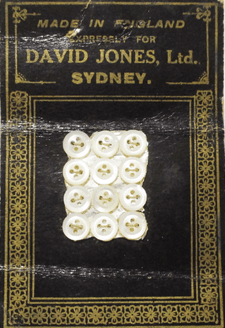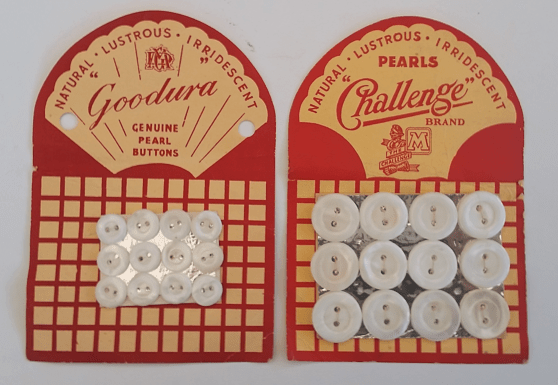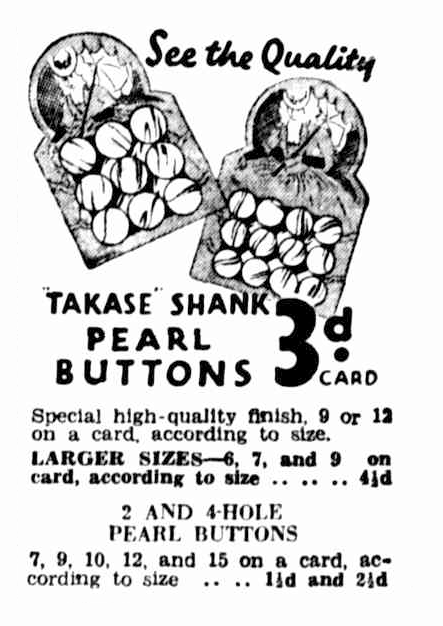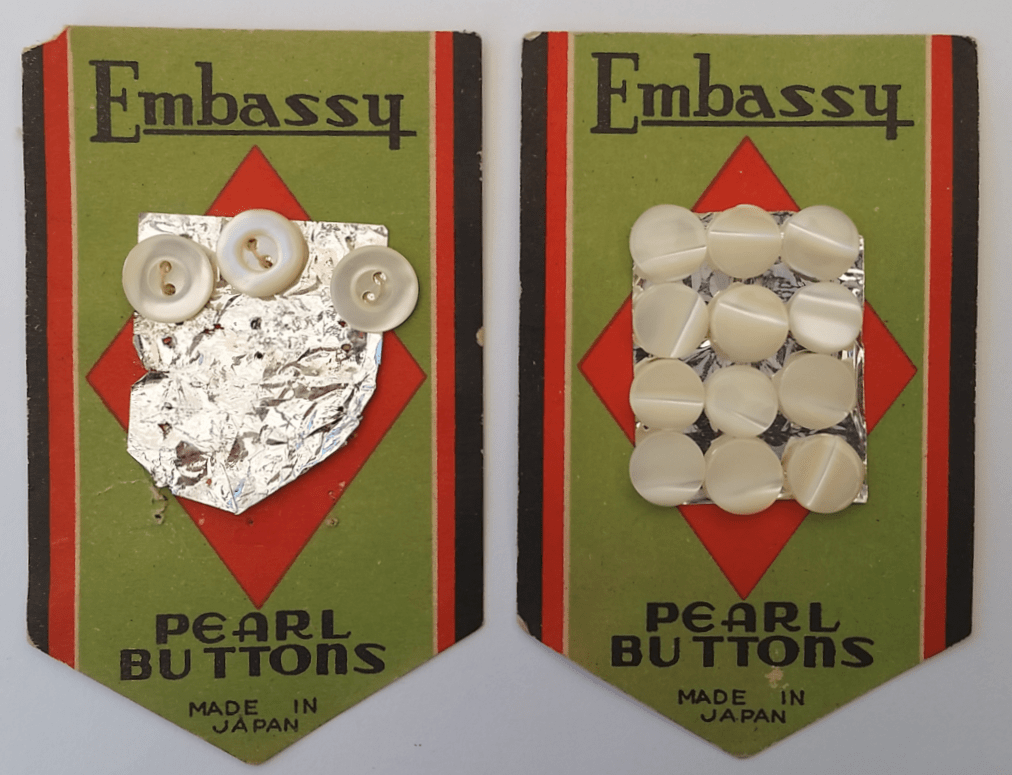Cards of MOP Buttons
When did buttons start to be sewn onto cards for distribution and selling? In the book “The Life of William Hutton”, written by him from 1798-1815 and published by his daughter after his death, he wrote in 1800 of the carding for buttons he was producing, so it must have dated before then. I have wondered when the habit of sewing mother-of-pearl buttons on cards with a backing of foil started. Charles Dickens wrote, in 1851;
“When the housewife has taken into use the last strip of pearl buttons, she probably gives to the children the bit of gay foil on which they were tacked, without ever thinking where it came from, or how it happened to be there. The importation of this foil is a branch of trade with France. We cannot compete with the French in the manufacture of it. When we saw it in bundles – gay with all gaudy hues – we found it was an expensive article, adding notably to the cost of the buttons, though its sole use is to set off their translucent quality, to make them more tempting to the eye.
We saw a woman, in her own home, surrounded by her children, tacking the buttons on their stiff paper, for sale. There was not foil in this case between the stiff paper and the buttons, but a brilliant blue paper, which looked almost as well. This woman sews forty gross in a day. She could formerly, by excessive diligence, sew fifty or sixty gross; but forty is her number now – and a large number it is, considering that each button has to be picked up from the heap before her, ranged in a row, and tacked with two stitches.”
How extraordinary, that one hundred years later MOP buttons were still being sold backed with foil.



The Sun (Sydney) 8th August 1935 page 21. The buttons can be seen to be sewn onto foil.

1950s era Embassy buttons as sold at G. J. Coles stores.
For all comments or questions, please use the Contact page.
